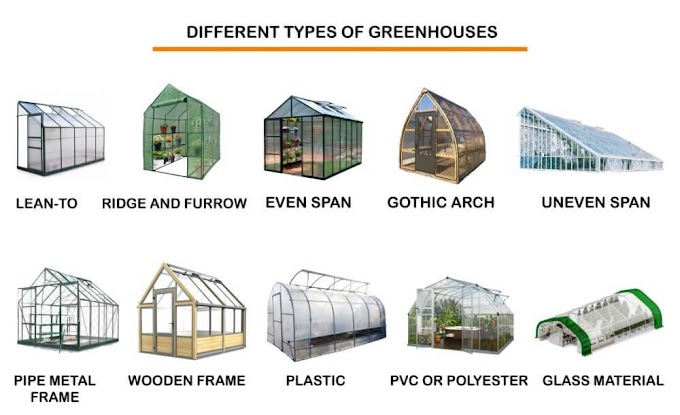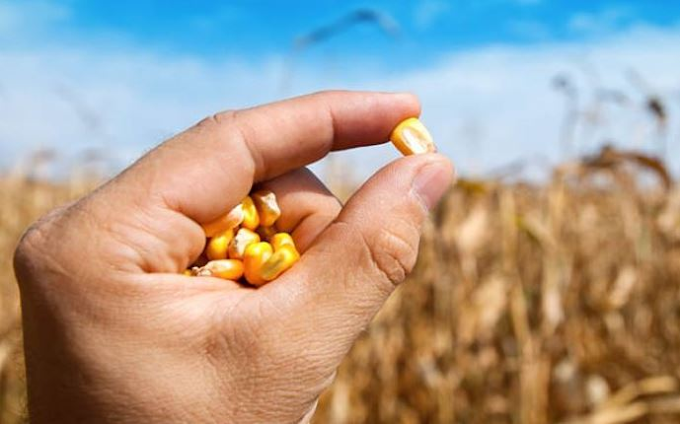Green House Environment
Plant response to greenhouse environments - light, temperature, relative humidity, ventilation and carbon dioxide and environmental requirement of agriculture and horticulture crops inside green houses.
The productivity of a crop is influenced not only by its heredity but also by the microclimate around it. The components of crop microclimate are light, temperature, air compositions and the nature of the root medium. In open fields, only manipulation of nature of the root medium by tillage, irrigation and fertilizer application is possible. The closed boundaries in greenhouse permit control of any one or more of the components of the micro climate
Light:
The visible light of the solar radiation is a source of energy for plants. Light energy, carbon dioxide (Co2) and water all enter in to the process of photosynthesis through which carbohydrates are formed. The production of carbohydrates from carbon dioxide and water in the presence of chlorophyll, using light energy is responsible for plant growth and reproduction. The rate of photosynthesis is governed by available fertilizer elements, water, carbon dioxide, light and temperature.
Considerable energy is required to reduce the carbon that is combined with oxygen in CO2 gas to the state in which it exists in the carbohydrate. The light energy thus utilized is trapped in the carbohydrate. If the light intensity is diminished, photosynthesis slows down and hence the growth. If higher than optimal light intensities are provided, growth again slows down because of the injury to the chloroplasts
The light intensity is measured by the international unit known as Lux. It is direct illumination on the surrounding surface that is one meter from a uniform point source of 1 international candle. Green house crops are subjected to light intensities varying from 129.6klux on clear summer days to 3.2 Klux on cloudy winter days. For most crops, neither condition is ideal. Many crops become light saturated, in other words, photosynthesis does not increase at light intensities higher than 32.2klux. Rose and carnation plants will grow well under summer light intensities. In general, for most other crops foliage is deeper green if the greenhouse is shaded to the extent of about 40% from mid spring (May) to mid fall (August and September). Thus, it is apparent that light intensity requirements of photosynthesis are vary considerably from crop to crop.
Light is classified according to its wave length in nanometers (nm). Not all light useful in photosynthesis process. UV light is available in the shorter wavelength range, i.e less than 400nm. Large of quantities of it is harmful to the plants. Glass screens are opaque to the most UV light and light below the range of 325nm. Visible and white light has wavelength of 400 to 700nm.Far red light (700 to 750nm) affects plants, besides causing photosynthesis. Infrared rays of longer wavelengths are not involved in the plant process. It is primarily, the visible spectrum of light that is used in photosynthesis. In the blue and red bands, the photosynthesis activity is higher, when the blue light (shorter wavelength) alone is supplied to plants, the growth is retarded, and the plant becomes hard and dark in colour. When the plants are grown under red light (longer wavelength), growth is soft and internodes are long, resulting in tall plants. Visible light of all wavelengths is readily utilized in photosynthesis
Temperature:
Temperature is a measure of level of the heat present. All crops have temperature range in which they can grow well. Below this range, the plant life process stop due to ice formation within the tissue and cells are possibly punctured by ice crystals. At the upper extreme, enzymes become inactive, and again process essential for life cease. Enzymes are biological reaction catalyst and are heat sensitive. All biochemical reactions in the plant are controlled by the enzymes. The rate of reactions controlled by the enzyme often double or triple for each rise of temperature by 10 0C, until optimum temperature is reached. Further, increase in temperature begins to suppress the reaction and finally stop it.
As a general rule, green house crops are grown at a day temperature, which are 3 to 6 0C higher than the night temperature on cloudy days and 8 0C higher on clear days. The night temperature of green house crops is generally in the range of 7 to 21 0C. Primula, mathiola incana and calceolaria grow best at 7 0C, carnation and cineraria at 10 0C, rose at 16 0C, chrysanthemum and poinsettia at 17 to 18 0C and African violet at 21 to 22 0C.
Relative humidity:
As the green house is a closed space, the relative humidity of the green house air will be more when compared to the ambient air, due to the moisture added by the evapo-transpiration process. Some of this moisture is taken away by the air leaving from the green house due to ventilation. Sensible heat inputs also lower the relative humidity of the air to some extent. In order to maintain the desirable relative humidity levels in the green houses, processes like humidification or dehumidification are carried out. For most crops, the acceptable range of relative humidity is between 50 to 80%. However for plant propagation work, relative humidity up to 90% may be desirable.
In summer, due to sensible heat addition in the daytime, and in winters for increasing the night time temperatures of the green house air, more sensible heat is added causing a reduction in the relative humidity of the air. For this purpose, evaporative cooling pads and fogging system of humidification are employed. When the relative humidity is on the higher side, ventilators, chemical dehumidifiers and cooling coils are used for de- humidification.
Ventilation:
A green house is ventilated for either reducing the temperature of the green house air or for replenishing carbon dioxide supply or for moderating the relative humidity of the air. Air temperatures above 35 0C are generally not suited for the crops in green house. It is quite possible to bring the green house air temperature below this upper limit during spring and autumn seasons simply by providing adequate ventilation to the green house. The ventilation in a green house can either be natural or forced. In case of small green houses (less than 6m wide) natural ventilation can be quite effective during spring and autumn seasons. However, fan ventilation is essential to have precise control over the air temperature, humidity and carbon dioxide levels
Carbon dioxide:
Carbon is an essential plant nutrient and is present in the plant in greater quantity than any other nutrient. About 40% of the dry matter of the plant is composed of carbon. Under normal conditions, carbon dioxide (CO2) exits as a gas in the atmosphere slightly above 0.03% or 345ppm. During the day, when photosynthesis occurs under natural light, the plants in a green house draw down the level of Co2 to below 200ppm. Under these circumstances, infiltration or ventilation increases carbon dioxide levels, when the outside air is brought in, to maintain the ambient levels of CO2. If the level of CO2 is less than ambient levels, CO2 may retard the plant growth. In cold climates, maintaining ambient levels of CO2 by providing ventilation may be uneconomical, due to the necessity of heating the incoming air in order to maintain proper growing temperatures. In such regions, enrichment of the green house with CO2 is followed. The exact CO2 level needed for a given crop will vary, since it must be correlated with other variables in greenhouse production such as light, temperature, nutrient levels, cultivar and degree of maturity. Most crops will respond favorably to Co2 at 1000 to 1200 ppm







No comments:
Post a Comment